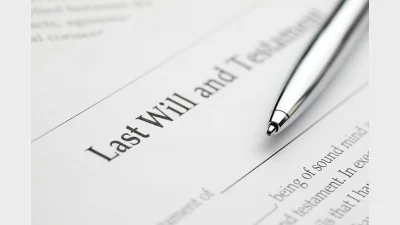How advisers can protect charitable bequests



With average household debt growing by 7.3 per cent to $261,492 in 2021-22, according to the Australian Bureau of Statistics, challenges to wills have been unrelenting in recent years.
This is especially the case in the family provisions area where, in NSW alone, there were around 1,880 family provision cases both filed and pending by the end of 2021.
At the same time charities are increasingly feeling the pinch as the number of people giving to them has hit an all-time low over a similar period. The falls in donations are making it hard for charities to meet the increasing demand for their services.
A significant contributor to these falls is family claims on testamentary gifts to charity or for charitable purposes. In those situations when a claim is made and there’s a substantial amount in a charitable trust or charity, the courts are often more generous about awarding to family members instead of the charity, despite the original wishes of the will maker. Additionally, in many cases the charities are often unwilling to pursue the matter too vigorously, if at all.
Family provision and why charities can end up last
A family provision claim is when an eligible person such as a spouse, child or dependant of the deceased applies to the Court to gain a portion of their estate, or a larger one if they think they deserve more.
The court has the ability to make further provision for those eligible persons. One of the first steps is for the court to look at competing interests. It’s common for people who wish to give back to the community and to people less fortunate than themselves, to bequeath a substantial portion of their wealth to charity.
In this case, the charity often comes off second or third best in the process.
The issue could be on both sides. There could be a reluctance from the charity to take on the family or the emphasis on the courts in awarding moneys to families. There’s also been a tendency to expand the discretion of the courts so there has been less concentration on the provision of maintenance and it’s no longer restricted to a group of people closely linked to the testator. This means more potential beneficiaries are now eligible to contest a person’s charitable bequest.
Because most family settlements do not reach trial but reach some sort of informal settlement usually at a mediation, it is impossible to estimate how much charities have forgone. As an example, one case showed how a will maker whose estate was valued at $300,000 left $225,000 to various charities and $75,000 to an estranged daughter. Under the family provision legislation, the daughter sued and was an awarded an additional $75,000 with the remaining $150,000 left to distribute between the charities.
What can charities and will makers do to protect their bequests?
Charities need to be more vigorous in their defence of a bequest. Solicitors drafting a will for a person who is intending to benefit a charity should perhaps encourage the donor to make a gift, while donors are alive or establish a gift-giving vehicle such as a private ancillary fund (PAF) or a sub- fund under a Public Ancillary Fund.
Charities themselves should be encouraged to get proper legal advice when crafting the will in the way that would best protect the gift. The easiest way is to do this while the person is still alive.
From the will maker’s perspective, it’s always useful to let the charities know they will benefit from a gift in a will. They should also be warned if they do give a gift to a charity in the will there is a chance of it being upset by a family provision claim particularly if the bequest is a substantial one.
From the charity’s viewpoint, if a person is acting on behalf of a charity, then they may need to step in and take an active part in engaging with the person who is leaving them the funds. They may also have to manage bad publicity that portrays the charity as greedy.
Seeking their own legal advice is always a plus and if appropriate, seek to file an affidavit defending the bequest. While this may result in further costs it can also create a better position than sitting back and adopting a wait and see attitude.
It’s good practice for charities to appear personally at mediations with their own lawyer so they can explain clearly what the money is going to be used for and to keep file notes with meetings with the will maker.
Other strategies involve keeping track of the list of donations by the deceased during their lifetime and any volunteer work for the charity by the deceased and in general aiming to display a strong connection between the will maker and charity. Sometimes this is difficult, though, especially when there are a number of charities to act as a whole against a family provision claim.
Ultimately charities have very little moral claims and families come first so the only way is to establish a relationship between the two.
A pattern of donations by the will maker is also helpful, how often they volunteer at the charity, as well as articulating clearly how the money might be used. This will help fight the perception that it is just going into the coffers of the charity.
If it happens to be a residence, the will maker can leave it to spouse as a portable life interest, which then goes to charity after their spouse passes away. Ideally it’s important for the will maker to put a statement in their will as to why they are leaving the money to the charity, and not just simply naming the charity as a beneficiary.
Going down the trust or fund route
As mentioned, there are other ways to give without using a will, while a person is still alive and subsequently avoiding the risk of contest. For example depending on their situation, a person can invest via an existing charitable trust, or a PAF. Structured giving via one of these vehicles can have significantly more power than giving a single, lump-sum donation to charity via a will.
For example, a once-off $1 million donation to a hospital may help pay for a new wing to be built.
However, $1 million dollars invested in a philanthropic trust or foundation will grow over time. With regular payments made from the trust’s income, the hospital will likely receive millions of dollars over many years. The hospital will be able to use the funds for what it requires, at the time, year-after-year.
By setting this up before the person passes away, a watertight vehicle is established which is immune to being challenged after a person dies, particularly from those seeking family provisions.
Mercia Chapman is senior legal counsel, trustee wealth services at Equity Trustees.
Recommended for you
As the industry shifts from client-centric to consumer-centric portfolios, this personalisation is likely to align portfolios with investors’ goals, increasingly reflect their life preferences, and serve as a gateway to rewards and benefits.
Managing currency risk in an international portfolio can both reduce the volatility, as well as improve overall returns, but needs to be navigated carefully.
In today’s evolving financial landscape, advisers are under increasing pressure to deliver more value to clients, to be faster, smarter, and with greater consistency.
Winning one premiership can come down to talent, luck, or timing but winning multiple ones indicates something deeper and successful is at play, writes Darren Steinhardt.











